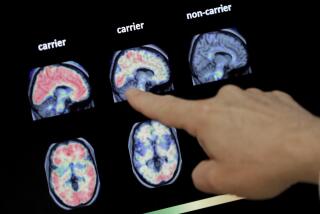ADHD on rise among minority, high-income families

- Share via
In Southern California, the diagnosis of attention deficit and hyperactivity disorder (ADHD) surged for African American and Latino children and continued a steady increase among kids from higher-income families between 2001 and 2010, a new Kaiser Permanente study shows.
ADHD diagnoses among African American children grew by 70%, and they increased by 60% among Latino children, said the study, which was published online Tuesday in the journal JAMA Pediatrics. But the psychiatric diagnosis remained highest by far among white children, among whom 5.6% (up from 4.7% in 2001) were thought to have ADHD by the end of the study period.
Overall, ADHD diagnoses rose by 24% during the study period--from 2.5% of kids in 2001 to 3.1% in 2010. ADHD is marked by attention and focus difficulties, sometimes (but not always) with an accompanying tendency toward frenetic, impulsive behavior. It is typically diagnosed in schoolchildren--most frequently around the age of 8--but symptoms of disorganization and inattention often persist into adulthood.
The researchers observed “notable increases” in ADHD diagnoses among black girls. Among African American children, they noted that the long-seen gap between boys and girls with ADHD appeared to be narrowing. Generally, for every girl diagnosed with ADHD, there are three boys with the diagnosis. But among African American children, that ratio was closer to 1 to 2.5.
Only 1% of children of Asian-Pacific Islander ethnicity had been diagnosed with ADHD, a rate that barely budged during the millennium’s first decade.
The study’s first author, Dr. Darios Getahun of Kaiser Permanente’s Southern California Medical Group, said the study’s findings underscored that when it comes to ADHD, an ethnic’s group’s views on mental health are an important factor in driving the numbers. In the case of Asian-Pacific Islanders, Getahun said, the low numbers of ADHD diagnoses “tell me they have a cultural issue there,” which discourages seeking medical help for problems related to social and emotional functioning.
Among higher-income families, the authors also noted the importance of parental expectations in the likelihood of an ADHD diagnosis. The high rate of ADHD diagnoses in children from more affluent homes “likely represent[s] an effort by these highly educated parents to seek help for their children who may not be fulfilling their expectations for schoolwork,” the authors wrote.
The newest study of childhood ADHD comes in somewhat below national estimates of the disorder’s prevalence among children--between 3% and 7%. Getahun suggested the study’s overall rate of 3.1% may offer a closer gauge of ADHD’s prevalence among children, since it comes not from parents’ or teachers’ reports but from clinical judgments made over at least two physician visits or reflected in medication refills.
The researchers attribute the hike in ADHD diagnoses in part to a rise in awareness of the disorder by parents and physicians, and Getahun said that “heightened awareness” within African American and Latino families may have driven the disproportionate increases in ADHD diagnoses seen in this study among those ethnic groups.






